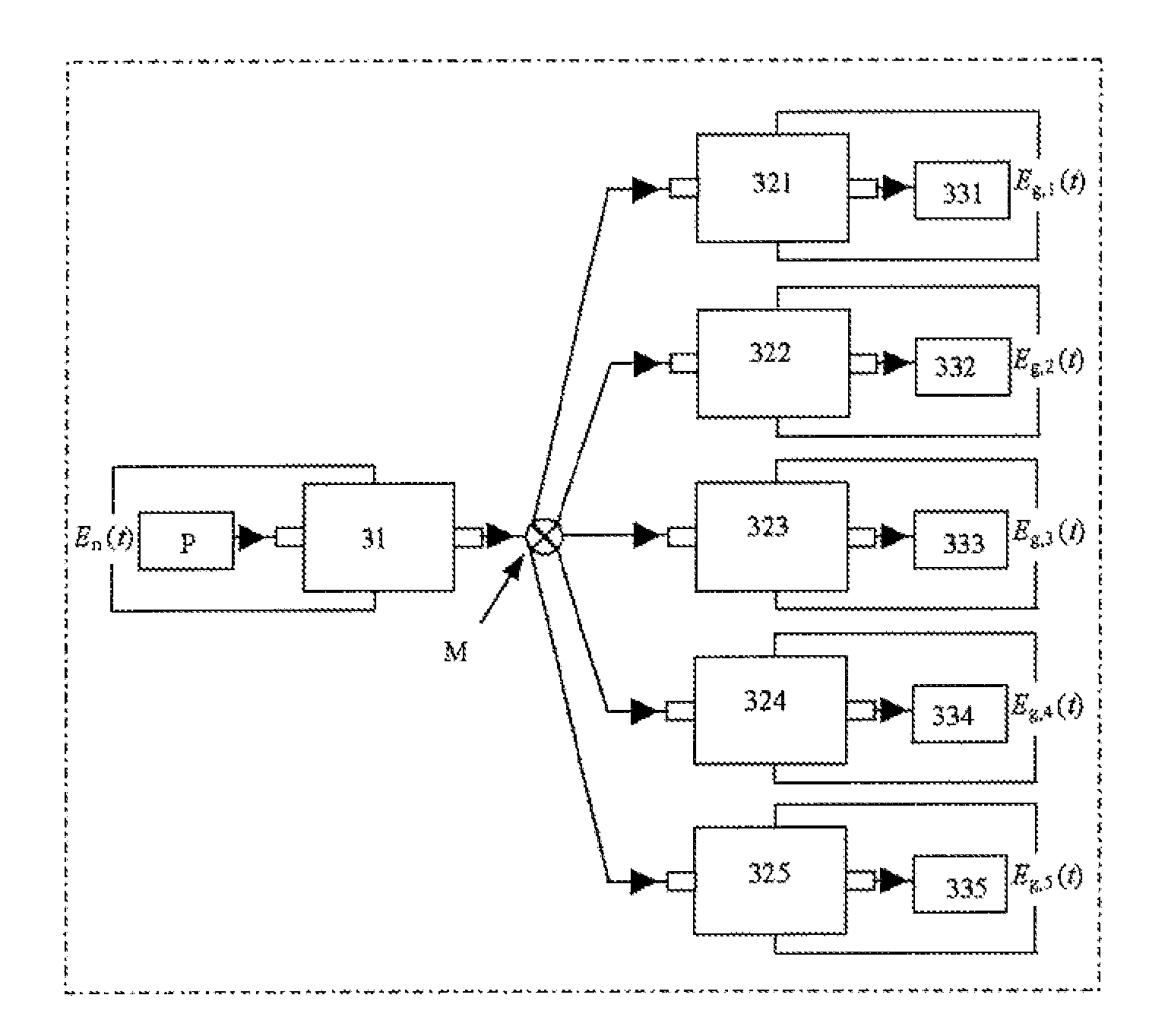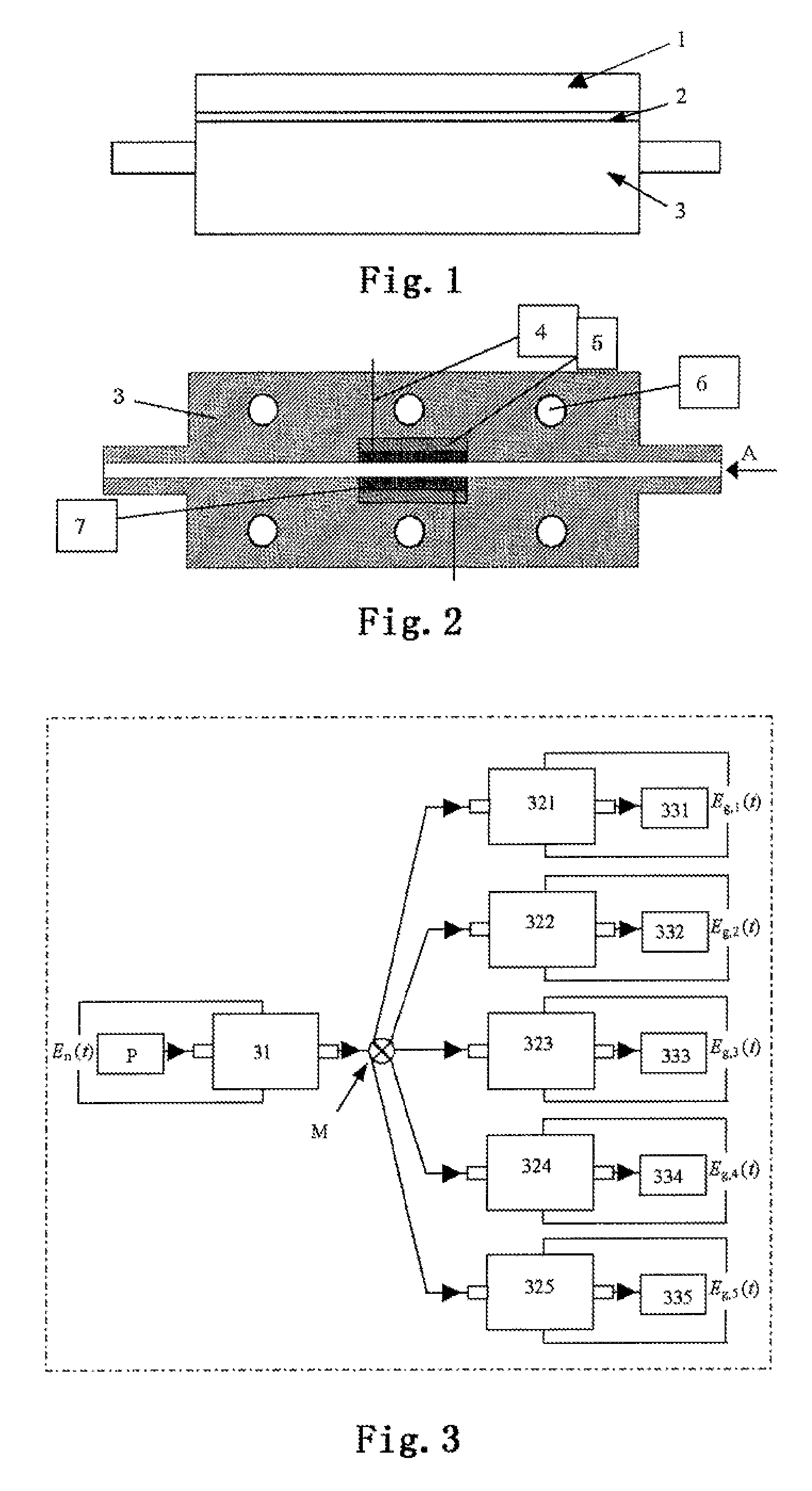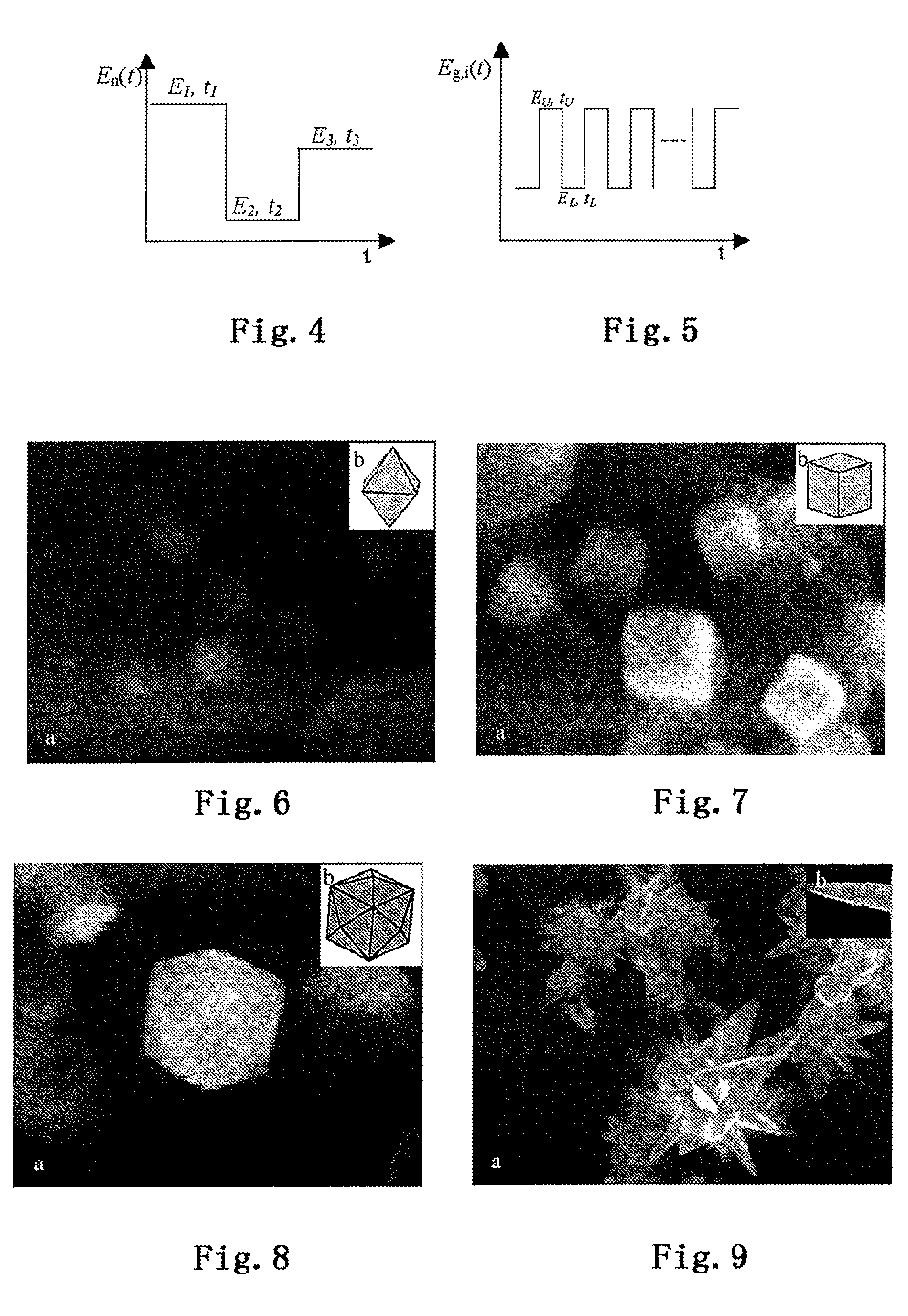Method for tuning surface structure of metallic nano-catalyst and preparation method thereof
a technology of metallic nanocatalysts and surface structures, which is applied in the direction of catalyst activation/preparation, metal/metal-oxide/metal-hydroxide catalysts, chemical/physical processes, etc., can solve the problems that cannot be used in the practical catalytic system and industrial processes, and achieve the effect of improving the selectivity and stability of metal nanocatalysts
- Summary
- Abstract
- Description
- Claims
- Application Information
AI Technical Summary
Benefits of technology
Problems solved by technology
Method used
Image
Examples
example 1
[0061]Referring to FIGS. 1 to 3, the surface structure control and preparation system of the metal nanocatalyst is designated as follows: the nucleation electrolytic cell 31 and the growth electrolytic cells 321 to 325 have the same geometric dimension and interior structure; the cell body 3 of the electrolytic cell is molded by processing of organic glasses, polytetrafluoroethene or other insulation material; a pair of conductive plate electrodes are inserted in parallel into the cell body 3 of the electrolytic cell; and the gap between the two electrodes is the reaction space. A precursor reaction solution P is injected into the nucleation electrolytic cell 31 for reaction, and then, after formation of the crystal nucleus, flowed into a plurality of the growth electrolytic cells 321 to 325 via the distribution valve M to complete the growth of nanoparticles, resulting in products 331 to 335. One pair of conductive plate electrodes 7 are inserted directly into a groove in center of...
example 2
[0062]Surface structure control and preparation for the metal nanocatalyst: a precursor reaction solution P is flowed into the nucleation electrolytic cell 31. A nucleation programmed potential En(t) is applied on both ends of the nucleation electrodes (wherein E represents potential, n represents nucleation, and t represents time) to induce nanoparticle crystal nucleus flowing into the growth electrolytic cells 321 to 325 after growth. A growth programmed potential Eg,i(t) is applied to both ends of the growth electrodes (wherein E represents potential, g represents growth, i represents sequence of the growth electrolytic cell, and t represents time) to complete growth of the nanocrystals. As the nucleation time is comperatively shorter, a plurality of parallel growth electrolytic cells may be arranged based on a ratio of the growth time to the nucleation time (it has five growth electrolytic cells 321 to 325 in FIG. 3) to accomplish continuous preparation of the metal nanocatalyst...
example 3
[0063]A preparation process similar to that in Example 2 is used when preparing the platinum nanocatalyst: metal platinum is used as electrodes; the precursor reaction solution comprises platinum precursor and carbon black (carbon black as a carrier); the growth programmed potential has an upper potential limit of 1.2 V, a lower potential limit of −0.8 V, a frequency of 10 Hz, and a growth time of 90 min. The prepared platinum nanocatalyst has an appearance of octahedron. FIG. 6 is the SEM figure of the platinum octahedron nanocatalyst and the model figure of the corresponding platinum octahedron structure.
PUM
| Property | Measurement | Unit |
|---|---|---|
| distance | aaaaa | aaaaa |
| distance | aaaaa | aaaaa |
| aspect ratio | aaaaa | aaaaa |
Abstract
Description
Claims
Application Information
 Login to View More
Login to View More - R&D
- Intellectual Property
- Life Sciences
- Materials
- Tech Scout
- Unparalleled Data Quality
- Higher Quality Content
- 60% Fewer Hallucinations
Browse by: Latest US Patents, China's latest patents, Technical Efficacy Thesaurus, Application Domain, Technology Topic, Popular Technical Reports.
© 2025 PatSnap. All rights reserved.Legal|Privacy policy|Modern Slavery Act Transparency Statement|Sitemap|About US| Contact US: help@patsnap.com



